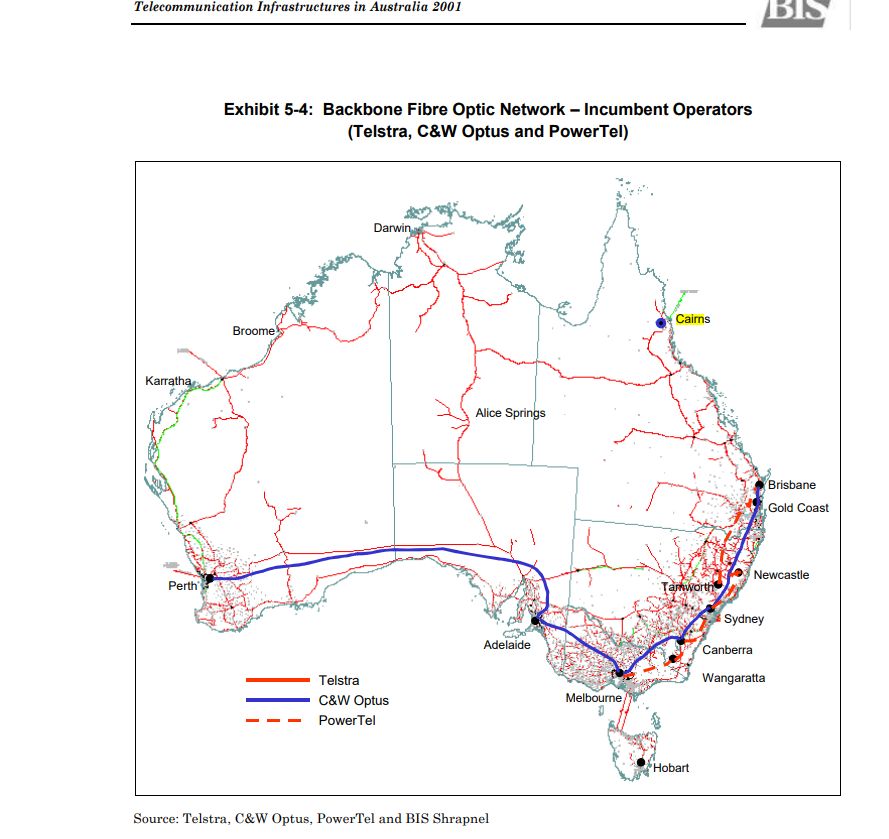Au Fibre Optic 2001

- 1989 Telstra builds Fibre Optic cable Melbourne - Sydney, having 1,000 times the bandwidth of copper, able to travel 100 times the distance.
- 1992 Optus opens its Sydney office, offering cheaper prices on Telstra's AMPS, its 1G mobile phone network, transmitting via Telstra's one thousand or so mobile towers. Optus constructs its first GSM 2G digital tower in Sydney alongside Telstra, now having an auto-encryption service. GSM networking then opened in 1993, with Vodafone also building its first tower later that year. But having a lower transmission distance, 35km compared to AMPS at 70km, there was fairly low takeup until 1996-1997.
- 1993 Optus constructs fibre-optic cable Sydney-Melbourne and starts fibre-optic cable Sydney-Brisbane.
- 1995 Foxtel, a partnership between News Limited and Telstra, opens TV cable network in Sydney Brisbane and Melbourne.
Optus TV opens its rival TV network the same time.
Telstra Bigpond purchases AARNet Australia's Academic and Research Network based at Melbourne University, who since 1989 oversaw the Internet in Australia, including its .au domain. Oversight of Australia's .au domain administration passed to auDA, a Commonwealth department, in 1999.
- 2001 Telstra's fibre optic cable reaches 140,000 kms around Australia, Optus reaches 8,600 kms. Powertel who became part of TPG, in the image at top had fibre optic cable Brisbane to Melbourne. Powertel had just two shareholders: Williams Communications and Downtown Utilities (a consortium of three major electricity distribution companies Energy Australia, Citipower and Energex). Powertel merged into AAPT in 2007 at a time AAPT belonged to Telecom New Zealand, and was subsequently sold to TPG in 2013.
In 2020 Vodafone also merged with TPG.
- 2002 Nextgen builds its Melbourne to Sydney and Melbourne to Adelaide fibre optic link. Extended to Perth and Brisbane in 2003. In 2016, Nextgen became part of Vocus, that includes Dodo and iPrimus.
- 2007 NBN, nationalizing fixed line cable to Australia's 10 million or so households from its POI Point of Interconnect, based in the old Telstra Exchanges, with each customer appointing an RSP Retail Service Provider for backhaul. In 2020 80% of Australia's households had signed up, in 2024 88%.
** End of Page
Go Top

